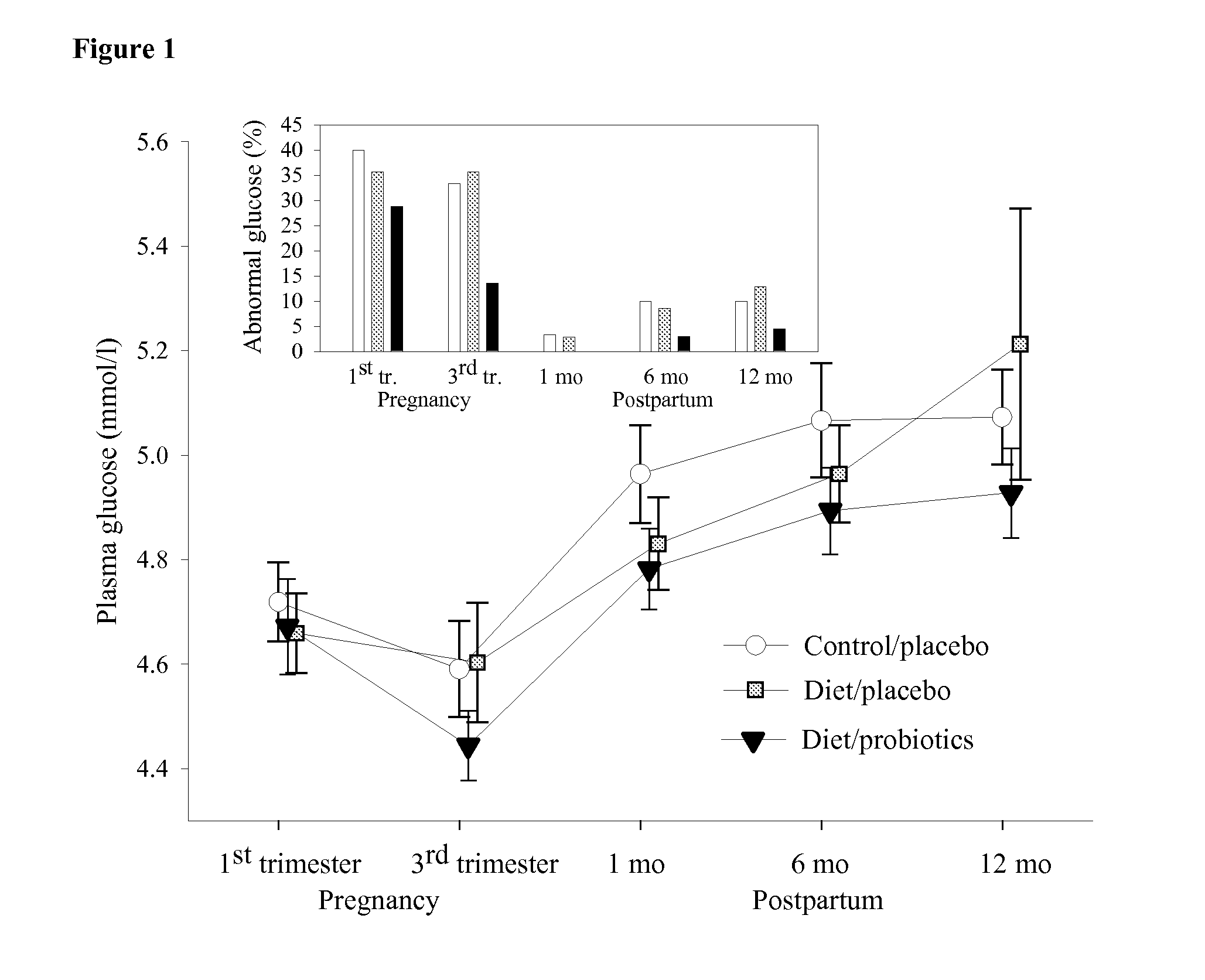Supplemention of maternal diet
a technology for supplementing the diet applied in the field of maternal diet supplementation, can solve the problems of long-term effects on the health of mothers and children, impaired glucose tolerance, and impaired glucose metabolism
- Summary
- Abstract
- Description
- Claims
- Application Information
AI Technical Summary
Benefits of technology
Problems solved by technology
Method used
Image
Examples
example 1
[0046]An example of a shelf stable nutritional supplement to be used according to the present invention is as follows: —
Per 100 g ready toPer servingPer 100 kcaldrink(190 ml)Energy (kcal)10065130Fat (g)0.920.601.20Protein (g)3.542.304.60Carbohydrate (g)19.412.6025.2Dietary fibre (g)3.622.354.70MineralsSodium (mg)513366Potassium (mg)238155310Chloride (mg)12380160Calcium (mg)308200400Phosphorus (mg)162105210Magnesium (mg)58.03876Selenium (μg)7.75.010.0VitaminsBeta carotene (μg)160010502100Vitamin D (μg)3.82.505.0Vitamin E (IU)4.63.06.0Vitamin C (mg)382550Vitamin B1 (mg)1.20.751.5Vitamin B2 (mg)1.30.851.7Niacin (mg)12816Vitamin B6 (mg)1.10.71.4Folic acid (μg)310200400Vitamin B12 (μg)1.20.751.5Biotin (μg)543570Trace ElementsIron (mg)127.515Iodine (μg)150100200Copper (mg)0.200.130.26Zinc (mg)3.82.55.0Probiotic bacteriaL. rhamnosus10e10ATCC 53103B-lactis10e10Bb12
example 2
[0047]This example compares the effect on plasma glucose concentration and insulin sensitivity of administering probiotic bacteria to pregnant women with the effect of administration of a placebo to a comparable group of pregnant women.
[0048]256 pregnant women were recruited to participate in a randomized, prospective combined dietary counselling and probiotics intervention study (NCT00167700, http: / / www.clinicaltrials.gov). Subjects were recruited during the first trimester of pregnancy at their first visit to maternal welfare clinics in the city of Turku and neighbouring areas in South-West Finland. Subjects included had no metabolic diseases. Written informed consents were obtained from the women and the study protocol was approved by the Ethics Committee of the Hospital District of South-West Finland.
Study Design and Conduct
[0049]Study visits took place at each trimester of pregnancy, and at 1, 6, and 12 months postpartum. At baseline, subjects were randomly assigned to three st...
PUM
 Login to View More
Login to View More Abstract
Description
Claims
Application Information
 Login to View More
Login to View More - R&D
- Intellectual Property
- Life Sciences
- Materials
- Tech Scout
- Unparalleled Data Quality
- Higher Quality Content
- 60% Fewer Hallucinations
Browse by: Latest US Patents, China's latest patents, Technical Efficacy Thesaurus, Application Domain, Technology Topic, Popular Technical Reports.
© 2025 PatSnap. All rights reserved.Legal|Privacy policy|Modern Slavery Act Transparency Statement|Sitemap|About US| Contact US: help@patsnap.com

